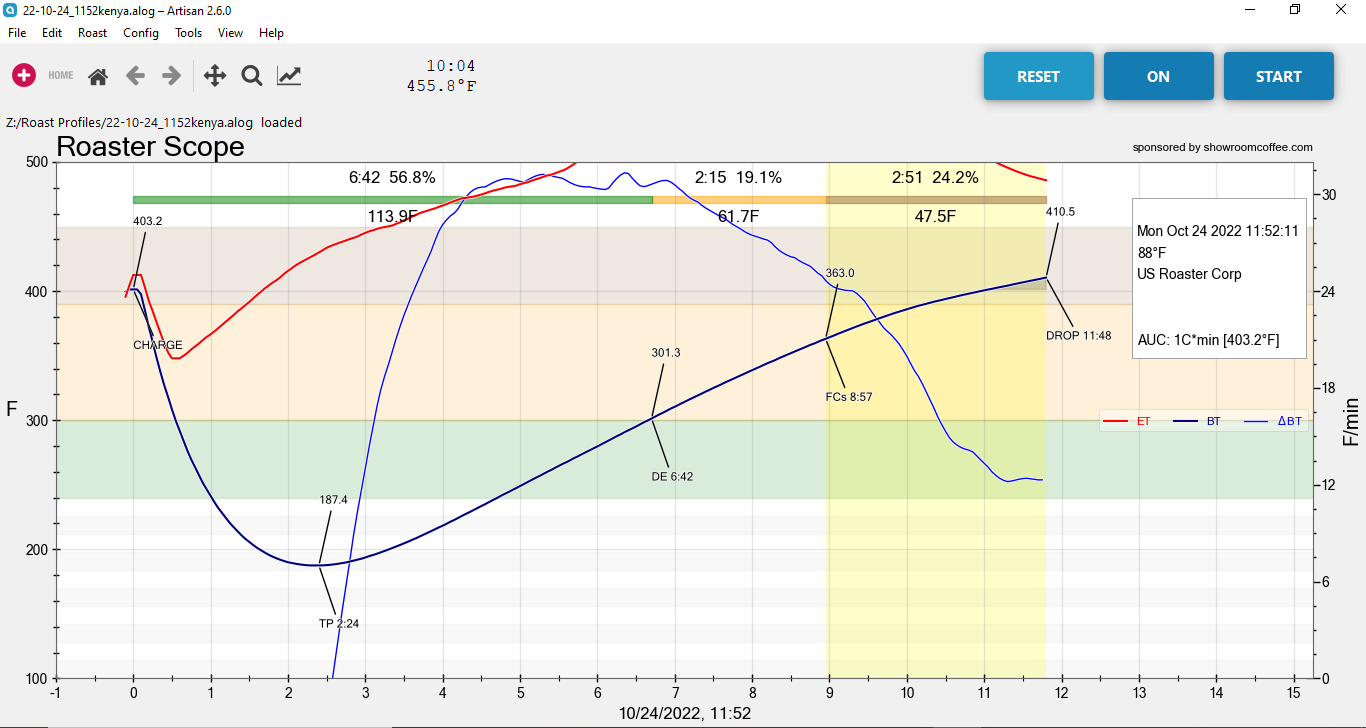Welcome to another edition of For The Love of Coffee, a weekly blog about all things coffee exclusively for the staff of Vienna Coffee.
Have you ever wondered what all the fuss is about regarding light roasted vs dark roasted coffee? Sure, there are obvious differences; one coffee appears dark and oily, and the other is a light-brown color with no perceivable oil on the surface. One tastes dark and smoky (some may even say burnt) and one is more floral and fruity with typically a bright acidity and clean finish. What causes these dramatic differences in flavor? Is it all just about how long the coffee is roasted? Or is there more to crafting a rich, flavorful dark roast than just roasting the coffee to the edge of being a fire hazard?
Coffee roasted to a very dark roast degree called “French Roast” degree will appear black and oily on the surface.
For a typical coffee here at Vienna Coffee Company, we start with quality-sourced green coffee. We take this coffee and roast it to a few different profiles (more on that in a moment) and then cup the coffees to decide which one tastes the best and brings out the unique characteristics of that particular varietal.
After cupping the same coffee roasted at different degrees of roast we will determine what profile seems to be the best for getting the maximum flavor and delight from that coffee. We will then make a determination as to what we will label that roast following our established protocol (Light, Med-light, Medium, Dark, French). You should all recognize this graphic used on all of our 12oz bags which indicates roast level.
This image indicates that the coffee inside is roasted to a Medium roast degree
This simple graphic communicates a lot about the coffee inside. It tells the customer what they can expect from the coffee as far as the roast degree, which (for the experienced coffee consumer) will tell them a lot about the flavor profile. Roast degree, probably more than any factor determines what coffee will taste like in the cup. The roast degree is something controlled by the Roastmaster. However, the roast degree of the coffee is not the only determining factor. The amount of time a coffee spends in the “Maillard Reaction” and “Development time” will also affect the tasting notes in the cup. For a more detailed discussion of roasting visit my previous blog The Art of the Roast.
In the interest of time, I will not go into the various theories about roasting coffee and how each phase of the roast can affect the flavor in the cup. Below is a very simplified graphic overview of how a roast degree can affect flavor.
In the most basic terms, a lighter-roasted coffee will be more acidic, lighter-bodied, have a more fruity and/or floral character and have a clean finish. A darker roast will tend to be less acidic, have more body, have more earthy/smoky notes, and a longer finish. All of these tastes and perceptions are influenced by how long the coffee beans spend in the various stages of the roast, and the final drop temperature of the beans. A roast profile is a graphical representation of a coffee roasting session and shows the times and temperatures of each phase of the roast along with the total roast time and drop temperature. All of this information is then used to determine cup quality and characteristics. Below is an example of a roast profile used for a Kenya coffee found in our Red Roaster Blend.
The profile tracks the time and temperatures of the roast along a curve which can then be duplicated in future roasts.
In conclusion, the degree to which a coffee is roasted is one of many factors which determine how it will ultimately taste in the cup. Many factors such as quality of green beans, processing methods, and the Roaster’s skill will all have an effect on the final product. The beauty of coffee is that no matter if you prefer light, medium, or dark roasts, the same coffee can be roasted to varying degrees bringing out different flavors and experiences for each roast. The next time you enjoy a delicious cup of Vienna coffee be sure to take note of the roast level and begin to appreciate all the wonderful and complex flavors that it brings to the cup.
It’s a GREAT day for coffee!!
~Matt~






